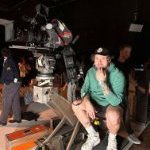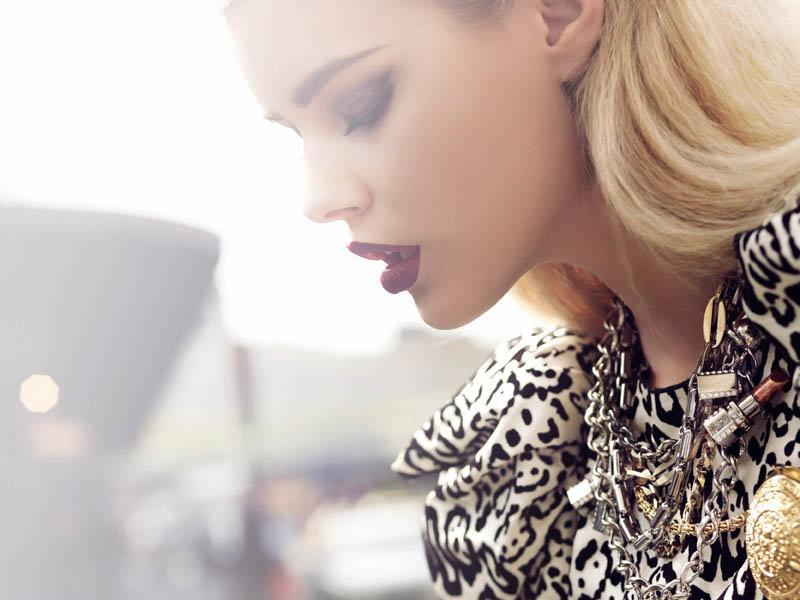-
Posts
88 -
Joined
-
Last visited
Profile Information
-
Occupation
Cinematographer
-
Location
Los Angeles, CA
Contact Methods
-
Website URL
http://www.alexdisenhof.com
Recent Profile Visitors
5,444 profile views
-

Sepia coloured practicals
Alexander Disenhof replied to Simon Johansson's topic in Lighting for Film & Video
If shooting digital, I sometimes like to set my white balance to 4300 when shooting in mixed lighting conditions. That way the daylight goes cooler and the tungsten naturally goes warmer in camera. I also have a few custom LUTS that push tungsten towards a golden yellow. There are many ways to achieve this look, those are just two options! -
Hi all, I've decided to sell my beautiful set of Zeiss Superspeeds 18mm is a m2, 25, 35, 50, and 85mm are all m3. They have been recently recoated and overhauled by Stuart at Focus Optics here in LA. I've shot many, many projects with them, including THE EXORCIST (FOX), CAPTIVE STATE (FOCUS FEATURES) and CITY ON A HILL (SHOWTIME). The only reason I'm selling is that I'll be on several loooong narrative projects these next two years and won't be using them. I'd love to find them a good home! Please serious inquiries only.
-
Another thing to remember is that it’s easier to add an eye light without destroying your contrast if you light using higher light levels. For example, if your key light is only 6 footcandles, adding any kind of fill to get an eye light will inevitably effect the contrast more than if your key is at 25 footcandles. Let’s say you need 3 footcandles out of your chosen eye-light source to be able to see it in the eye. That means you’ve made your low-lit scene key/fill ratio 2:1. That said, because an eye light is essentially a reflection, even if you stop down to expose for a scene that’s lit with 25 footcandles (two stops brighter than 6 footcandles), it’s unlikely that you will also need to bring your eye light up two stops to see the reflection. Even if you bring your eye light up a full stop to see it in the eye, your ratio is still 4:1. This means you can maintain a more contrasty ratio while maintaining the eye light.
-
David is right in saying that you should compare blu-ray to blu-ray. That said, with the Alexa I very rarely put my highlights at 100%. I find to get the mood I'm looking for I often put my highlights around 70%.
-
Hi Stephen, I know this is an old post, but I'm curious which Blue/Gray filters you used in that first early morning scene in the trench? Looks great!
-

Throwing the "shutter" of of Phase on the original Alexa
Alexander Disenhof replied to Alexander Disenhof's topic in ARRI
Very true. Just wondered if they had a digital equivalent buried in the camera somewhere! Thanks David! Alex -
I'm looking to create vertically smeared highlights that occur when you put the shutter in a film camera slightly out of phase with the film movement. The effect is seen in movies like The Limey and Saving Private Ryan. Anyone know if you can do something comparable to this on the original Alexa, with it's electronic shutter? Thanks! Alex Disenhof
-

low light floating ghost
Alexander Disenhof replied to Colm Whelan's topic in Lighting for Film & Video
Sounds like you need to talk to your VFX supervisor. Will the ghost be fully CG? Do you want the ghost to give off any light? If so I'd maybe float a dimmed down jemball/china ball or something similar then let the VFX guys track and replace it with the digital ghost. Alex Disenhof www.alexdisenhof.com -

Ways to degrade 5K footage IN camera
Alexander Disenhof replied to Alexander Disenhof's topic in General Discussion
anyone?? -
Hey all, this could fit in several different topic forums, so I'll post it here... I'm shooting a commercial next week, and was just contacted by the director that he wants to "degrade" the 5K Epic footage in camera to make it feel rougher and less sharp, almost like 16mm film. Now, you ask, why don't we just shoot 16mm film? There are several reasons, some involving specialty body mounted camera rigs we are using, overcranking issues, and VFX to be done in post. So lets just assume the Epic is the way I must go. I'm thinking lenses and filters will be my main tool to achieve the desired effect, but I also have some caveats on that end: the filters must be available as screw ons - we need the camera to be as lightweight as possible and so a mattebox wont do. The lenses must be relatively fast - we are shooting day into night using available light in an urban environment at night. the lenses must be lightweight - for the same reasons we need screw on filters. Lastly, during the day we need to be able to stop down a fair amount, as the shots call for a great amount of DOF. So finding old lenses (like the Super Baltars) and opening them up all the way to get flares and softness isn't really an option. Any ideas? The director wants flares too, which would help degrade our images, but of course if we have to stop down our lens we are working against that idea.... Maybe I shoot at a high ISO and throw a ton of screw on ND's in front of it? Put vaseline on an optical flat? Any lenses that people love that could fit this job? Thanks all! Alex Disenhof DP www.alexdisenhof.com
-

Scene: conversation in sunlight
Alexander Disenhof replied to Artyom Zakharenko's topic in Lighting for Film & Video
There's a few things you could do - of course it all depends on the position of the sun. If the sun is a little lower in the sky, you could position the actors perpendicular to it and then shoot the over their shoulders on the far side, creating a nice far side key for both. You should be able to diffuse the light as well if needed, as you aren't looking towards the sun and thus wont see any stands or flags. If the sun is further overhead and you can't reschedule the scene, you could use a large diffusion and fly it directly overhead, diffusing the light on both actors. Then you could use mirrors, bounce, or lights to get light onto their faces in whatever direction you like. All of this said, the feel of your photography should fit the scene that you are shooting. There are plenty of great looking scenes out there with a frontally lit actor conversing with a backlit one. Phedon Papamichael, ASC actually said recently that "you'll never see me do two people opposite each other, both backlit" (AC 1/2012). There is a certain naturalism to it that can work well. Alex -
-
Hi all, Just curious to all out there who have done a lot of beauty and fashion stuff, what are your favorite methods of getting that flared, washed out image that you see so often in beauty work? Obviously the lenses you choose matter, but what kind of lighting tricks do people use? Has anyone used a flashlight right next to the mattebox? See this image for reference:
-
Hi David, beautiful work. Truly an inspiration.
-
Hey everyone. I'm shooting a music video soon where a guy transforms into a werewolf and the director sent me this image, saying that he would love to achieve something like this. This image is obviously heavily manipulated in post, but I'm trying to get something close to it with VERY limited resources. We are shooting in a wooded area near a house at either dusk or night, and I have to work with only lights that I can power off 20amp circuits (we'll have house power plus maybe 1 or 2 6500w putt putt generators. Shooting RED, probably at around 3200K or 4000K. I'm thinking using lots of haze, backlighting him with something like a 1.2K with 1/2CTO high up and letting the light spill onto the haze behind him. The taking two more 1.2K up high on either side, backlighting the trees on the left and right, but with no CTO so they stay cooler. Let the haze fill in the shadows a little bit, then do some vignetting of the image in post to augment the falloff. Either that or maybe bouncing light into a 12x ultrabounce overhead behind the actor to get a soft pool on the trees and the haze, leaving him in silhouette. What do people think? Any ideas? I'm looking for some inspiration. Alex









